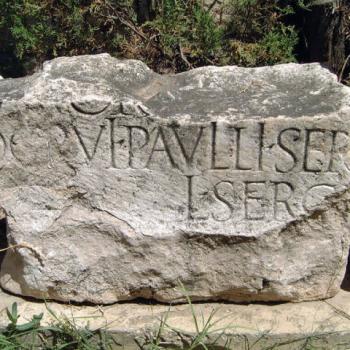The following is a post by my friend Larry Hurtado.50th Anniversary: Barr’s “Semantics of Biblical Language”by larryhurtado |
A bit late in the year, I’ve noted that this is the 50th anniversary of the publication of a truly landmark book by a former member of academic staff in New College, Edinburgh: James Barr, The Semantics of Biblical Language (Oxford: Oxford University Press, 1961).
Barr served as Professor of Old Testament Literature & Theology in the University of Edinburgh 1955-61, followed by appointments in the University of Manchester, Oxford University, and Vanderbilt University. He was a Fellow of the British Academy, Fellow of the American Academy of Arts and Sciences, and of the Americal Philosophical Society.
The Semantics of Biblical Language was Barr’s first major publication, and it has been judged to have “a reconstruction of descriptive biblical linguistics” (Arthur Gibson, Biblical Semantic Logic, 2nd ed., Sheffield Academic Press, 2001, p. 3). Beginning with a criticism of then-current superficial contrasts between “Hebrew thought” and “Greek thought”, Barr then introduced some key principles of modeern linguistics. The broad thrust was to challenge traditional etymology-based studies of words and the free use of alleged word-equivalents in other Semitic languages (e.g., Ugaritic) to supply meanings to unusual Hebrew words in the OT.
In the process, Barr laid out numerous examples of the bad methods he wished to correct. For example, he devoted a whole chapter to a critique of lexical approach taken in the Kittel Theological Dictionary of the New Testament.
The basic points that Barr sought to make were, at the time of his book’s appearance, not well understood among biblical scholars. Sadly, I fear that this remains the case. Too many scholars (and so their students) still take an approach in which Hebrew or Greek words are treated as having fixed meanings, and so understanding texts is essentially a process of totting up a suitable dictionary meaning of all the words of its sentences. It is still news to many that the fundamental semantic unit is not the “word” but the sentence, and that “words” (lexical entries) acquire a specific meaning when deployed in sentences. Likewise, scholars often still don’t understand that word-constructions often take on their own meaning that is not the sum of the parts (e.g., “hot dog” isn’t the sum of the meanings of “hot” and “dog”!) .
This is so in spite of the efforts of scholars influenced by Barr’s work, such as Moisés Silva, Biblical Words and Their Meaning: An Introduction to Lexical Semantics(Grand Rapids: Zondervan Publishing House, 1983); Peter Cotterell and Max Turner, Linguistics and Biblical Interpretation(Downers Grove: Inter-Varsity Press, 1989); Stanley E. Porter, “Linguistic Issues in New Testament Lexicography,” in Studies in the Greek New Testament: Theory and Practice (New York: Peter Lang, 1996), 49-74.
Today’s PhD students in OT and NT, however, really should acquaint themselves with at least the basics of semantics. Many years ago, I benefitted from reading a classic introduction: John Lyons, Language and Liguistics: An Introduction (Cambridge: Cambridge University Press, 1981). Even taking on board a few basics can make a big difference in the work of understanding texts, especially those separated from us in language, time and culture.
So, a toast to Jimmy Barr and his celebrated study in this 50th year of its publication, especially by those of us here in his old digs in New College (where it all began).












